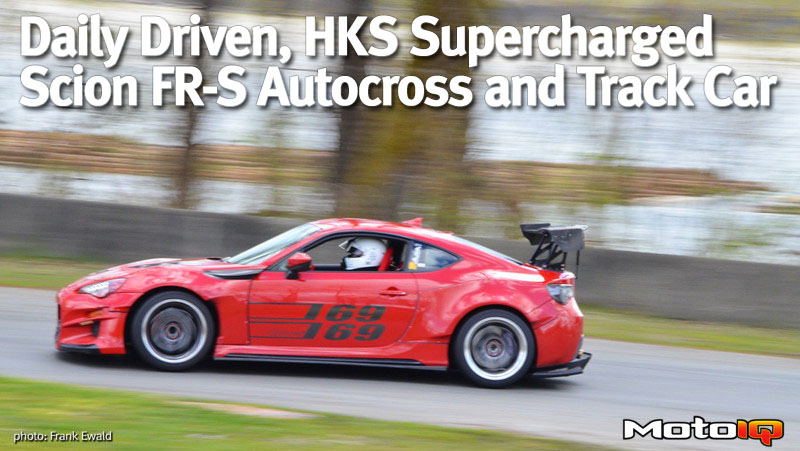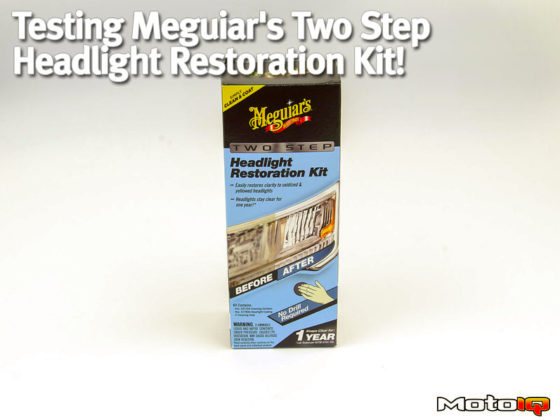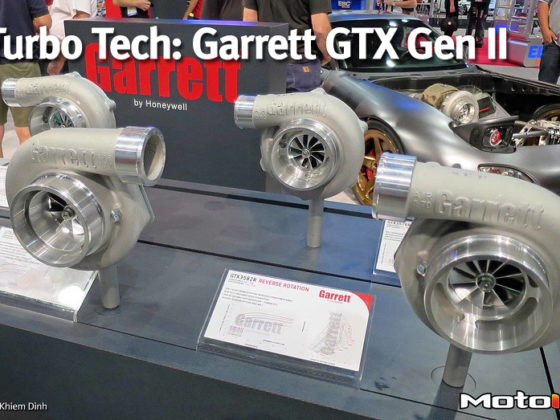,
 You may be surprised to see the factory intake box is still in place. Since we were at the track, we didn't have the opportunity to get photos from under the car. The engine internals are all stock, but the injector seals and timing chain cover seal have been replaced. Sandwich plates provide the ports necessary to run an engine oil cooler plus temperature gauges. I like the 86 plate!
You may be surprised to see the factory intake box is still in place. Since we were at the track, we didn't have the opportunity to get photos from under the car. The engine internals are all stock, but the injector seals and timing chain cover seal have been replaced. Sandwich plates provide the ports necessary to run an engine oil cooler plus temperature gauges. I like the 86 plate!Now for some parts that you cannot see. An ACT Stage 2 clutch and lightweight flywheel transfers the power to the wheels. The clutch fork was replaced with an aftermarket fork after the OEM part sheared off. Exhaust is routed through an OpenFlash Unequal length header, a Nameless Performance 2.5″ downpipe with an integrated CAT, and from Japan a Clieb single exit cat back exhaust. A tow strap takes the place of the second exhaust opening.
 A RevWorks oil catch can is mounted beside the battery – which has an extention on the negative ground for additional grounding wires.
A RevWorks oil catch can is mounted beside the battery – which has an extention on the negative ground for additional grounding wires. Ground Control camber plates are the only components of the suspension setup that we were able to see track side.
Ground Control camber plates are the only components of the suspension setup that we were able to see track side.Before the supercharger was installed, Simon went to a lot of work setting up the suspension and alignment so that the car handled even better than stock. There was next to no understeer as he pushed the car around the track. Simon has access to the alignment equipment at Alpha 1 Automotive where he does his own alignments.
In addition to the Ground Control camber plates, the rest of the suspension has been upgraded. Racecomp Engineering Tarmac 0 coilovers have been fitted with custom Swift springs. This RCE setup is made by KW, and from a quick search online, it appears to be a solid choice for this platform. Simon has put custom 6.5 KG/mm (364 lb) Swift springs on all four corners. River's Edge has a couple of transitions that are rather severe with the FR-S hitting the bumpstops only at one of them. Further suspension improvements include Whiteline 22mm front and 20mm rear sway bars, endlinks and rear toe rod. Whiteline spherical bushings have replaced all of the OEM rubber mounts. The lower front control arm is now a Buddy Club setup. A cusco rear differential is another key performance upgrade. As one can tell, a lot of work has gone into making this car perform.
 Going fast is important but controlling and slowing the speed cannot be overlooked. Volks, Wilwood, and Zestino filled the front wheelwell.
Going fast is important but controlling and slowing the speed cannot be overlooked. Volks, Wilwood, and Zestino filled the front wheelwell.We like the way that Simon has gone about his upgrades. While we focused upon the forced induction first, please note that it was the last upgrade applied to the car. Suspension, braking, and body were all done prior to the addition of the HKS supercharger. Bringing this power under control are Wilwood 6 piston SuperLite calipers on the front with 330mm two piece rotors. He has been using Wilwood BP20 street pads and BP40 track pads. Of course, we have been chatting about the advantages of different pads for improved performance – the author's bias towards G-LOC Brakes compounds did come out.
 The wheels are Volks TE37V, and they are massive 18×10.5 +15 on the front and 18×10.5 with a 0 offset on the rear. The tires were newly mounted Zestino Gredge 265/35/18s and their grip was, quite honestly, astounding. It will be interesting to see how they perform after multiple outings.
The wheels are Volks TE37V, and they are massive 18×10.5 +15 on the front and 18×10.5 with a 0 offset on the rear. The tires were newly mounted Zestino Gredge 265/35/18s and their grip was, quite honestly, astounding. It will be interesting to see how they perform after multiple outings.The stock 5×100 bolt pattern limits the choice of wheels available for this platform. As Simon has already chosen to install a wide body kit on the car, there was plenty of room for spacers with a 5×114.3 bolt pattern. Not only does the spacer help fill out the wheel well and give a wider wheelbase, it opens the door to a more expansive choice of wheels.



